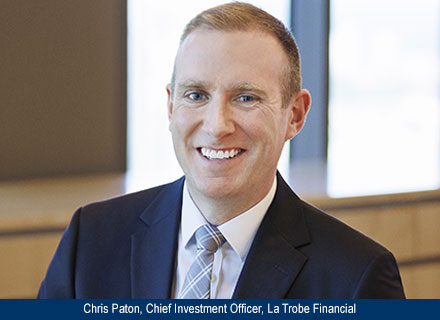La Trobe Financial has established itself as one of Australia’s most reputable and trusted alternative asset managers. For over seven decades, the firm has built investor wealth by focusing on quality, discipline, and consistent performance across economic cycles. Now, La Trobe Financial is setting its sights on introducing US Private Credit to the Australian investment landscape. To discuss this new development and its implications for Australian investors, the venture’s Chief Investment Officer, Chris Paton, spoke with International Finance.
Here are the excerpts from the interview:
Q: What is the La Trobe US Private Credit Fund?
Chris Paton: The La Trobe US Private Credit Fund has been deliberately designed to allow investors to participate in a generational investment thematic: rebuilding the US middle market, which will benefit from strong investment tailwinds of the coming decades. There are billions of dollars in public expenditure pledged through the US Inflation Reduction Act, with the support of both major political parties to re-shore manufacturing and jobs to America.
We provide investors access to that investment theme through a unique investment product. A pure-play investment into directly originated, senior secured first lien term loans provided to US middle market companies. These are companies predominantly owned by some of the largest private equity firms in the world.
As some short takeaways, our La Trobe US Private Credit Fund has monthly subscriptions and distributions; apart from providing quarterly liquidity access, up to 5% of each class of units on issue. It also offers a variable yield target, from 8.50% per annum net of fees and expenses, but before FX rate adjustments, and also will have AUD invested capital hedged against foreign exchange risk.
We designed this product with our product partners, Morgan Stanley, across two years to make sure we were getting it right for Australian investors.
Q: What is the market opportunity right now for investors?
Chris Paton: The fundamentals of these growth areas and the assets they will generate align very closely with the needs of investors. They are long-term trends. They will not likely become assets with wild price fluctuations, and they will generate income.
This positions alternative investments such as private credit with strong tailwinds. It is an asset class where managers can extract value and generate returns for investors when done correctly.
Success in any sector starts with getting the fundamentals right. We have found across our seven-decade history of managing Australian real estate private credit, that there are three non-negotiable for success: the right assets, the right structure, and the right manager.
The approach to our US Private Credit Fund has been to construct a diversified portfolio comprised primarily of directly originated, senior secured first-lien term loans provided to companies in the US middle market. We target larger, more robust companies. Companies with an EBITDA from USD 15 million to 200 million, operate across diversified industries within the US middle market. We deliberately avoid lending to companies and sectors that are cyclical.
We have a particular focus on the US middle market, which is by itself the world’s third-largest economy and forms the backbone of the American economy, and will stand to benefit from the big generational investment trends: deglobalisation, decarbonisation, digitisation and de-banking.
Our product partners, Morgan Stanley, focus on the quality of assets and are highly selective in the loans they approve for our investment portfolio. They reject 95% of the 1,000+ loans they review each year, investing only in those where we have the highest confidence in the return of capital and payment of interest throughout the life of the loan.
All of this is done very deliberately, as we seek to construct a portfolio which delivers performance for investors across the economic and market cycle.
Q: What does the future look like?
Chris Paton: Direct lending in the US middle market has provided an annual return to investors of c.9.4% over the past 20 years. It is an asset class which has delivered performance across a range of economic cycles. Looking ahead, the growth of private credit looks set to continue.
The total size of the asset class is forecast to reach USD 2.8 trillion by 2028 according to Preqin, an alternative assets researcher. It is an asset class benefiting from the rise of private markets, with fewer companies accessing capital via stock exchanges, and instead looking to raise funds directly through private markets. With banks having continued to retreat from these market segments, and fewer companies tapping stock exchanges to raise capital, the opportunities grow for private capital providers to step in; providing lending to high-quality businesses that would previously have either listed on a stock exchange or sourced a loan from a bank.
Experience from our existing strategies has proven that a well-diversified, carefully selected portfolio of private credit assets, when managed effectively, can perform well throughout the economic cycle. This thesis remains unchanged, and with this conviction, we present the La Trobe US Private Credit Fund to our investors.


